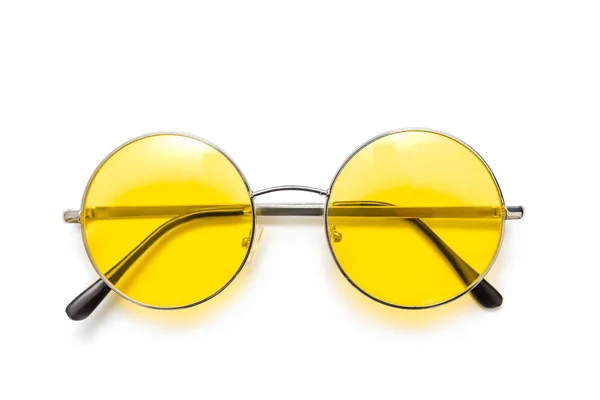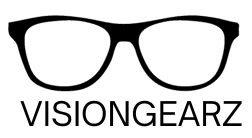Don't miss our holiday offer - up to 50% OFF!
Day Driving Glasses vs Night Driving Glasses

Is there a difference between day driving glasses and night driving glasses? If so, what is the difference?
Day Driving Glasses
Day driving glasses, as the name implies, are glasses that are worn while driving during the day. They deal with problems like glare from the sunlight, harmful blue light, and UV rays.
They use cutting-edge lens technology to improve your vision:
Lens Tints
Day driving glasses often use dark-tinted lenses. These colors aren’t chosen randomly; they’re based on scientific research into how our eyes perceive different wavelengths of light.
Amber and copper tints enhance contrast and depth perception by filtering out specific wavelengths of light. They reduce the amount of blue light that reaches your eyes, which is responsible for a lot of glare and haze. By doing so, these tints make it easier to spot road signs, pedestrians, and other vehicles.
The tint also helps in:
- Sharpening edges and improving definition
- Enhancing the perception of reds and greens, which are crucial for traffic lights
- Reducing eye strain by creating a more comfortable viewing experience
Some high-end day driving glasses use photochromic lenses. These lenses darken automatically when exposed to UV light, adapting to changing light conditions throughout the day.
Polarized Lenses
Many day driving glasses use polarized lenses, which are the perfect remedy for glare. Here’s how they work:
Light waves from the sun travel in all directions. When sunlight hits a flat surface like a road or water, it becomes polarized. This means the reflected light travels in a more uniform, often horizontal direction. This concentrated light creates glare, which can be blinding and dangerous while driving.
Polarized lenses contain special filters with vertically aligned molecules. These molecules block the horizontally polarized light waves, dramatically reducing glare from reflective surfaces. The result is clearer vision, reduced eye strain, and road safety.
Benefits of polarized lenses:
- Improved visual comfort in bright conditions
- Clarity and improved color perception
- Less eyestrain during long drives
- Better visibility of objects and terrain
UV Protection

UV protection is a must-have for day driving glasses. Our eyes are often exposed to harmful UV rays while driving. The best quality glasses offer 100% UV protection to shield your eyes. UV radiation can cause both short-term and long-term damage to your eyes, including:
- Photokeratitis (essentially a sunburn on your eyes)
- Cataracts
- Macular degeneration
- Pterygium (tissue growth on the whites of the eyes)
UV protection in driving glasses typically comes from a special coating applied to the lenses or from materials mixed into the lens itself during manufacturing. This protection is crucial for maintaining long-term eye health, especially considering the cumulative nature of UV damage.
Anti-Reflective Coatings
Many day driving glasses also have anti-reflective (AR) coatings. These coatings reduce internal reflections within the lens, allowing more light to pass through to your eyes. Benefits include:
- Improved vision
- Reduced eye strain
- Enhanced contrast and color perception
When to Wear Day Driving Glasses:
- On bright, sunny days
- During sunrise or sunset when the sun is low on the horizon
- In snowy conditions when sunlight reflects off the white surface
- In misty or foggy conditions where glare can be intensified
Benefits of Day Driving Glasses:
- Improved color perception and contrast
- Better clarity and depth perception
- Minimized glare from reflective surfaces
- Protection from harmful UV rays
- Improved reaction times due to better visual information
Night Driving Glasses
Night driving glasses address the unique challenges of driving after dark. These glasses use different lens technologies to enhance your vision in low-light conditions:
Anti-Reflective Coating
Night driving glasses have an advanced anti-reflective coating that reduces the intensity of oncoming headlights and street lamps. This coating reduces the amount of light reflecting off the surface of the lens.
The anti-reflective coating used in night driving glasses is often more sophisticated than those used in regular glasses. It’s specifically designed to handle the types of light encountered while driving at night, such as:
- High-intensity discharge (HID) headlights
- LED headlights and taillights
- Bright street lamps
By reducing these intense light sources, the coating helps prevent temporary blindness and allows your eyes to adjust more quickly after exposure to bright lights.
Yellow Tint

Yellow-tinted night glasses have a unique way of improving your night vision.
- Yellow tints filter out a good portion of the harmful blue light from entering our eyes
- Blue light is harder for our eyes to focus on, especially in low-light conditions
- By reducing blue light, the yellow tint enhances contrast and definition
This enhanced contrast makes it easier to see road markings, signs, and potential hazards. The yellow tint also reduces the brightness of oncoming headlights without significantly darkening your vision.
Blue Light Filtering
Some night driving glasses include advanced blue light filtering technology. This feature is becoming increasingly important due to the widespread adoption of LED and HID headlights. These headlights emit a higher proportion of blue light compared to traditional halogen bulbs.
Blue light filtering works by:
- Selectively blocking certain wavelengths of blue light
- Reducing glare from modern headlights
- Minimizing eye strain and fatigue
Lens Shapes
The shape of night-driving glass lenses is often designed to maximize your field of vision. Many models offer a wrap-around design that extends your peripheral vision. This is important for spotting potential hazards at night.
When to Wear Night Driving Glasses:
- When it’s dark–after sunset and before sunrise
- In foggy or rainy conditions at night
- When driving through poorly lit areas
- During twilight hours when visibility is low
Benefits of Night Driving Glasses:
- Reduced glare from oncoming headlights and street lamps
- Improved contrast in low-light conditions
- Improved ability to see road markings and signs
- Potential improvement in reaction times due to better visual information
- Reduced risk of temporary blindness from sudden bright lights
Can I Wear Day Driving Glasses at Night?
Wearing day driving glasses at night can be dangerous. Because of the dark-tinted nature of the lenses, and the purpose for which they are made, they dim your vision in already low-light conditions.
Day driving glasses are designed to handle intense light and glare. Their tinted or polarized lenses reduce the amount of light entering your eyes, which is beneficial during bright daylight but can be detrimental at night. Using them after dark could significantly impair your ability to see clearly, potentially leading to missed road signs, unseen pedestrians, or slower reaction times to sudden obstacles.
Can I Wear Night Driving Glasses During the Day?
In the same way, night driving glasses may not provide enough protection from bright sunlight during the day. Night driving glasses are specially created for low-light conditions.
While they can be worn during the day without too much harm, they’re not designed to handle intense sunlight or provide adequate UV protection. Extended use during bright daylight could lead to eye strain or even long-term UV damage.
For the best vision in all conditions, it’s advisable to have separate pairs for day and night driving. This ensures you’re always using glasses optimized for the specific light conditions you’re facing.
Read Also: Are Driving Glasses Really Helpful at Night?
